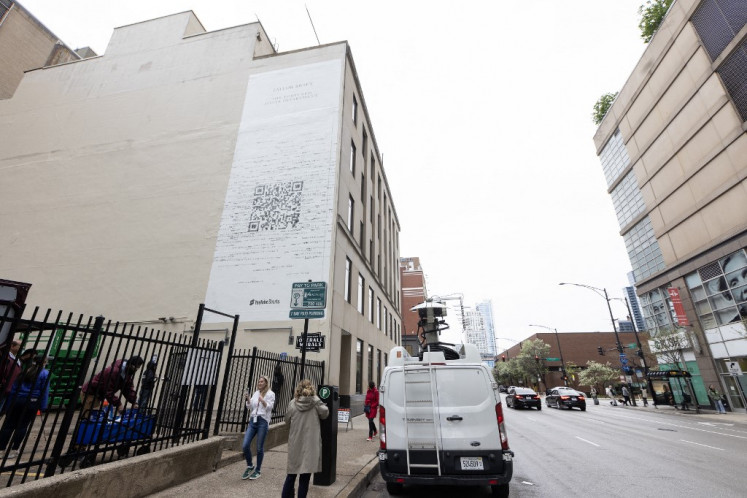'Unmarked Graves': The injustice that won't die
A historian digs deep into the horrors of Indonesia’s communist purge that took place in the 1960s in the East Java province.
Change Size
 Unmarked Graves by Vannessa Hearman (Shutterstock/NUS Press)
Unmarked Graves by Vannessa Hearman (Shutterstock/NUS Press)
P
resident Joko “Jokowi” Widodo was just a 4-year-old when the failed Sept. 30 coup allegedly conducted by the now banned Indonesian Communist Party (PKI) in 1965 led to the fall of late president Sukarno and the rise of Soeharto as Indonesia’s de facto dictator for more than 30 years.
The little Jokowi was probably too busy playing kelereng (marbles) around his family’s shack on the Surakarta river banks in Central Java to understand the political games that rocked the republic hundreds of kilometers away in Jakarta.
Even if some relatives had sniffed the reforms promised by the 3-million strong PKI, infecting the real or imagined interests of any fore-parents on their offspring is an obscenity.
That the slur gets some traction among Jokowi’s more gullible opponents shows how well Soeharto’s propaganda machine worked, embedding beyond two generations an unblinking hatred of a political ideology that currently runs the world’s most populous nation.
Here’s the irony: communist China is now Indonesia’s largest export and import market and a worrying naval force in surrounding seas. Polls suggest most Indonesians think favorably of the country helping finance their nation’s massive infrastructure program.
Yet Soeharto linked China to the coup and severed diplomatic ties — only re-established in 1990. Not normalized is a fearless examination of the coup and the appalling pogrom that followed.
Instead, it has been left to foreign journalists and academics to exhume the past for truths the government still finds too difficult to stomach.
Vannessa Hearman is a historian at Australia’s Charles Darwin University, but she is no outsider. She was born in Indonesia and has become a leading expert on the horrors that fell on millions of Indonesians who were accused as part of the PKI not long after the allegedly failed coup attempt. Her doctorate was jointly awarded best PhD in Asian Studies.
Her latest book Unmarked Graves probes the post-coup killings in East Java. At the time, about 22 million people lived in the province and an estimated 200,000 were slaughtered and thousands more persecuted long after the PKI had been destroyed.
Teachers were targeted with around 25,000 rounded up, interrogated and often imprisoned. Their careers were shredded and families shattered.
In one case encountered by Hearman, a couple was being hounded four years after the coup. They kept moving but were denounced and eventually jailed, split from their kids. Their descendants have never fully recovered.
The fact that the author uses pseudonyms shows how the decades have not washed out the pain and stigma.
Along with the victims’ wrenching stories, Hearman focuses on a lesser-known event — the attempted PKI regroup in South Blitar, about 800 km southeast of the capital.
PKI general secretary Sudisman was caught in 1966 and put on trial. He denied communists had powered the putsch but was executed in 1968. Party remnants fled Jakarta seeking a remote sanctuary.
Many were city people who would find rural life hard to take, but even barefoot and hungry was better than bullets or bars. One pragmatic asylum-seeker, tainted because he’d studied engineering in Bulgaria, reasoned: “It’s better to resist than die for no reason.”
The southern part of Blitar is an arid tortured landscape of 3,200 square km between the Brantas river and the southern ocean. It is creased with mountains, perforated with limestone caves, a haven for guerrillas fighting the Dutch between 1945 and 1949.
Life was tough and basic. Chairs were rare and bicycles rarer.
Poverty was too simplistic an explanation for peasants favoring communist policies. Other factors included land ownership and the santri (pious)-abangan(syncretism) religious divide.
Hearman’s research was difficult.
Apart from finding survivors prepared to recall, she was also questioned by the police when she visited the monument featured on the book cover.
Details she uncovered are horrifying. The army had spread the myth that female communists had hidden tattoos, which gave soldiers license to strip suspects. The military used villagers as spies and ordered them to kill, creating lasting guilt and enmity.
The two-month Operasi Trisula (Trident Operation) to destroy the PKI refugees involved 5,000 soldiers and 3,000 militia. It claimed to have caught or killed 2,000 but only found 34 old firearms and some blowpipes.
The tactics were much like the Vietnam War, with people digging tunnels and the army bombing suspect hideouts and slaughtering innocents.
Other strategies included the pagar betis (fence of legs) to comb the forest, burn huts, rip up vegetables, deport villagers to other areas and use locals to bury murdered prisoners.
Victors carve history, but time and truth erode their graven images. The statue portrays the counter-insurgency as a triumphant campaign of cooperation between disciplined soldiers and willing civilians to defeat communists. Hearman’s scholarship reveals other effigies that many want to keep shrouded.
The innocent children and grandchildren of the tapol (political prisoners) are still looking sideways despite Jokowi’s 2014 election pledge to tackle human rights abuses.
“In 2016, the President appointed a former army general, Wiranto [to deal] with the 1965 case,” Hearman writes in the book.
“Having been indicted by the [United Nations] in 2003 for crimes against humanity that took place in East Timor in 1999 during his reign as Indonesian armed forces commander, Wiranto is hardly a likely figure for pursuing perpetrators of human rights abuses.
“The Attorney General’s Office has, at the time of writing, continued to refuse to open an investigation [...] on the 1965–66 violence.”
Hearman’s research bold-texts the most damning question: How can the searing evidence she’s captured be ignored unless some of the guilty still hold great power in today’s democratic Indonesia?
__________
Unmarked Graves: Death and Survival in the Anti-Communist Violence in East Java, Indonesia
Vannessa Hearman, NUS Press, Singapore, 2018
272 pages









